NORTH WALES COAST RAILWAY:NOTICE BOARD
Rheilffordd arfordir gogledd Cymru: Hysbysfwrdd
28 May 2020
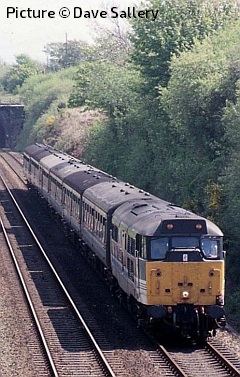
Forthcoming events
(see also our Calendar page for venues)
Note: we have removed all entries up to the end of June as the events are cancelled. The trains below are still being advertised, albeit rather optimistically.
July 2020
Sunday 19 July Steam on the Coast North Wales Coast Express (Railway Touring Company) Liverpool - Manchester - Holyhead (15:05 - 17:40).
Tuesday 21 July Steam on the Coast The Welsh Mountaineer (Railway Touring Company) Preston - Blaenau Ffestiniog and return
August 2020
September 2020
Saturday 5 September Steam at Chester 'The Cheshireman' (Railway Touring Company). Norwich to Chester. Loco 6233 for part of the journey.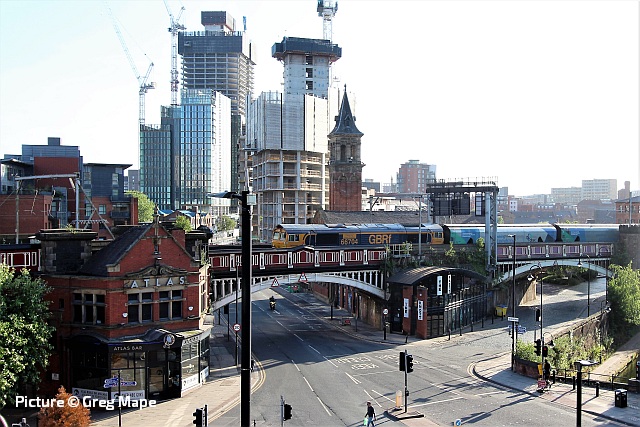
Towers rise in the background as a biomass train, 6E24 16:29 from Liverpool to Drax, passes Deansgate behind 66 704 Colchester Power Signalbox, Sunday 24 May. (Interestingly, Real Time Trains entries for GBRf trains now give the full headcode and loco number of each train.) Picture by Greg Mape.
Another extra issue - next update, evening of Tuesday 2 June.
Current events
It's perhaps worth recording for posterity the way Transport for Wales is serving the Coast line's key workers while using a minimum number of trains and train crews. Every two hours from 06:28, a train departs from Holyhead for Crewe and calls at every station including the island halts, and Deganwy and Llandudno by reversing at Llandudno Junction. The last train of the day is the 20:28 which terminates at Chester. A similar pattern applied on the return. Effective, but not quick, with a running time Holyhead to Crewe of almost three hours. The Conwy Valley branch is served by a bus. There's a useful summary of all current TfW services on their website. Avanti continue to provide one morning train to London and one evening return.
Meanwhile, TfW's first Class 230 diesel/battery hybrid unit, 230 006, converted from a London Underground unit, has been out on trial from Vivarail's base at Long Marston. Various clips are available on YouTube; we recommend this one as advert revenue is being given to the Severn Valley Railway's appeal fund. (You also get a quick glimpse of the Stourbridge branch 'people mover'.) Five of these units are on order, intended for the Conwy Valley, Borderlands, and Crewe - Chester services. How these trains perform on the gradients of the first two and tightly-timed turnrounds of the second and third (At Wrexham Central in former timetables trains apparently departed before they arrived) remains to be seen. They differ from London Midland's class 230s in having three coaches rather than two, and retaining more of the original four doors on two of the coaches. More details on Vivarail's website.
In South Wales, training and trials have begun with the Class 769 bi-mode units - Class 319 units with diesel engines added - for the Rhymney line. Not much has been heard about Northern's much-delayed 769s, although there have been test runs.
The Mystery Coach
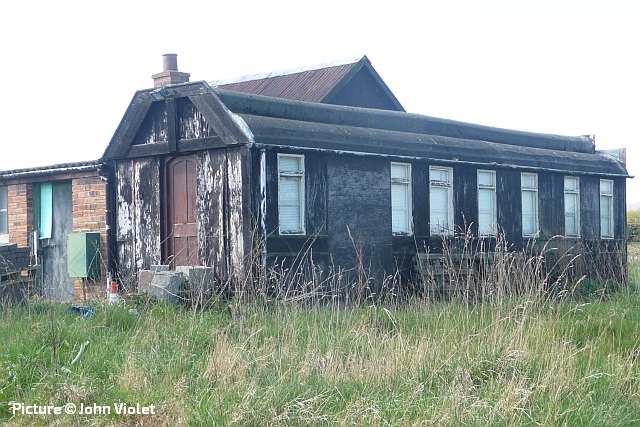
It didn't take long for readers to identify the 'mystery coach' in the last issue: it is in fact listed on the Railway Heritage Register Carriage Survey Project database but indexed under the village 'Llay' rather than 'Burton' and 'MR' instead of Midland Railway. It is in fact Midland Railway 6-wheeled Kitchen Car no. 581 built at Derby, which travelled in trains sandwiched (!) between two coaches of dining accommodation. The exterior has been board over for protection; the interior condition is said to be fairly intact. There are more details on page 41 of the book Midland Carriages by David Jenkinson and Bob Essery, but we can't tell you more as the Manchester Locomotive Society library, like other libraries, is 'locked out of use' at present. But there's a picture of a model on this link.
Reader Iain Chippendale identified the vehicle and adds: 'Of similar tack, I noticed in early March before lockdown came into effect that the GWR 6 wheel coach body has gone from the former Ynyslas station near Borth, does anyone know what has happened to that? And for those that walk the Ceredigion Coast Path there are some superb coach bodies in the Aberporth and Llangranog areas such as an LSWR sleeping car and a GWR inspection saloon'. The RCCP database has pictures: search by location.
Thanks also to Mike Stone and Frank Nicholas for writing. about this.
David Lloyd George at Baschurch - pictures by Graham Breakwell
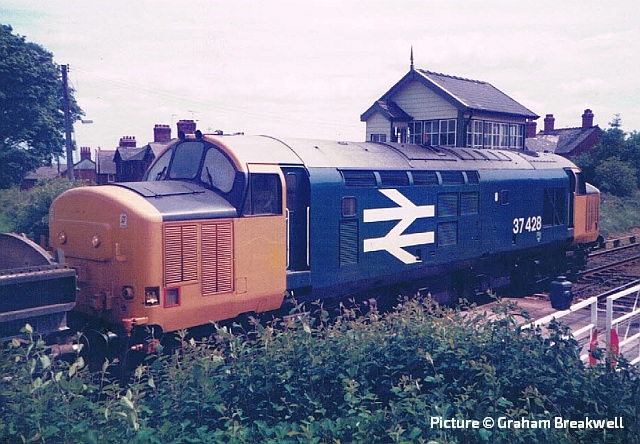
One day in May 1987, 37 428 passes Baschurch with a train of ballast wagons.
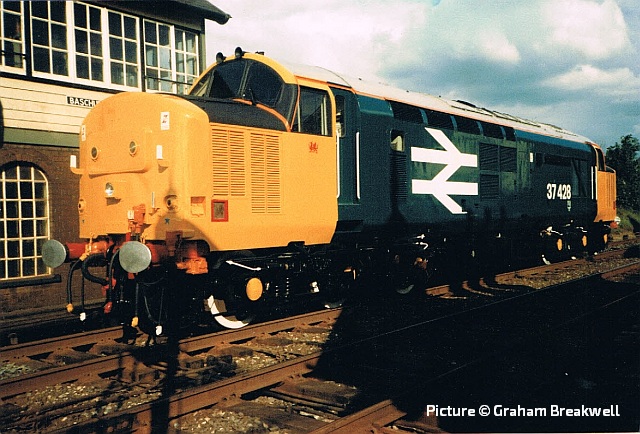
On 15 May 1987, now 'bulled-up' and with a nameplate, covered-up, 428 heads from Cardiff to the Cambrian Coast, to be named David Lloyd George at Pwllheli the following day, with Lady Olwen Carey-Evans, the daughter of Lloyd George, officiating. Although born in Manchester, the former Liberal prime minister's childhood home was at Llanystumdwy, near Criccieth.
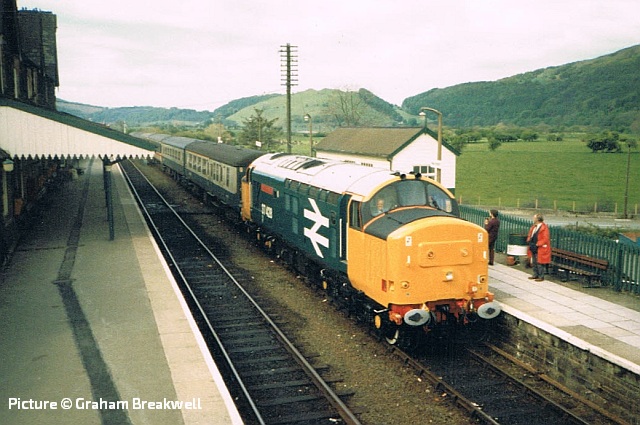
After the ceremony, and displaying the nameplate, 37 428 hauled the Pwllheli to London Euston service, seen at Machynlleth. In 1991 the loco was transferred to Scotland, where it gained 'Royal Scotsman' livery before returning to Wales and finally back to Scotland. It was taken out of traffic in 2007 and sinally scrapped in 2013.
20 906 at Helsby
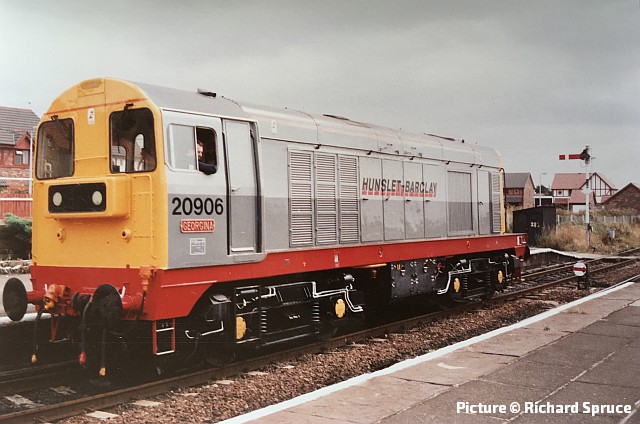
A second look at Richard Spruce's picture, published on the 5 May update, of 20 906 at Helsby (above). Nick Roberts writes: 'As a Driver I have just found my old work dairy for 1989. On 24 August I took 20 906 from Warrington to Holywell Junction and then back to Chester. The original plan was to take it to Llandudno Junction for one of the failed 20s on the weedkiller train. But only got as far as Holywell where we were turned back and left it at Chester where it was swapped out with the failed 20 later in the evening. 20 906 had arrived at Warrington DIT on a freight from Scotland.'
My first 37 on the coast - by Peter Hanahoe
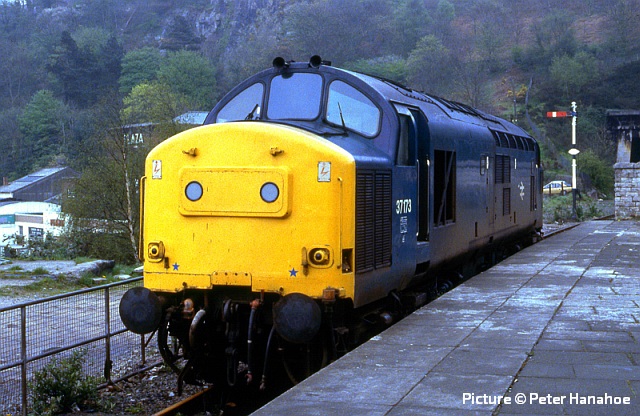
37 173 (above) was the first 37 I ever saw on the coast. I know it wasn't the first one through to Holyhead but it was the first I saw. Not only the first, but can you imagine my surprise when I popped into Bangor station on evening of 6 May 1983, to catch the 'Manchesters' and the Freightliners. only to find this languishing in platform 1. A real shocker. Not much at all used platform 1 by this time let alone a 37. It was a bit of a pinch yourself moment.
I had a few 2p coins on me and was able to use the red phone box on platform 2 to alert a few other interested parties. The phone box is now on platform 1 (but it hasn't moved). The story at the time was that this had worked down to Holyhead on a special Freightliner but the crew had run out of time, parked it in Bangor and headed home on the cushions.
It returned to England towing failed 47 481 on 1J31 Bangor to Manchester Victoria leaving at 19:30.
The semaphore controlling trains exiting platform 1 was the only semaphore left in Bangor after it was re-signalled in about 1970 and Bangor No.1 signal box closed.
From Dave Sallery's Archive
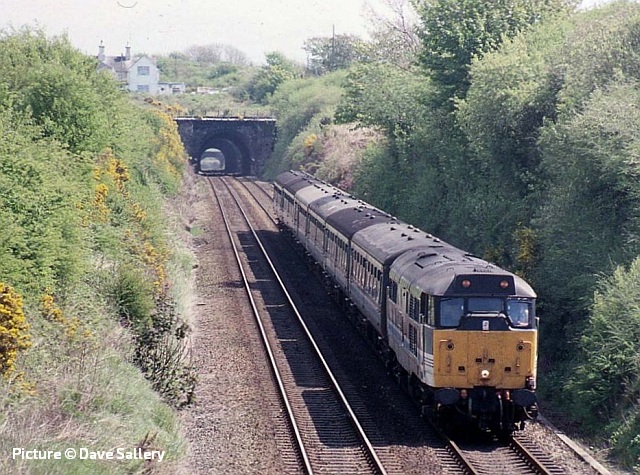
31 427 heading to Holyhead on 9 May 1994 has negotiated Bodorgan no. 1 tunnel (413 yards) and Bodorgan no.2 tunnel (115 yards) on the approach to Bodorgan station.
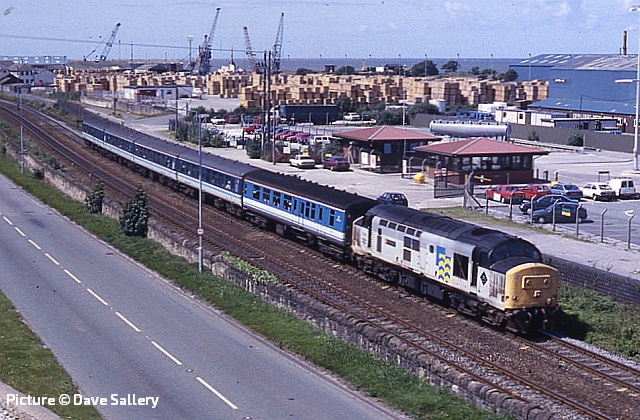
A hig-level view of Mostyn dock on 23 June 1993 with 37 418 Pectinidae on the 'Irish Mancunian' still in full Railfreight Petroleum livery in the early days of the 37-hauled services.
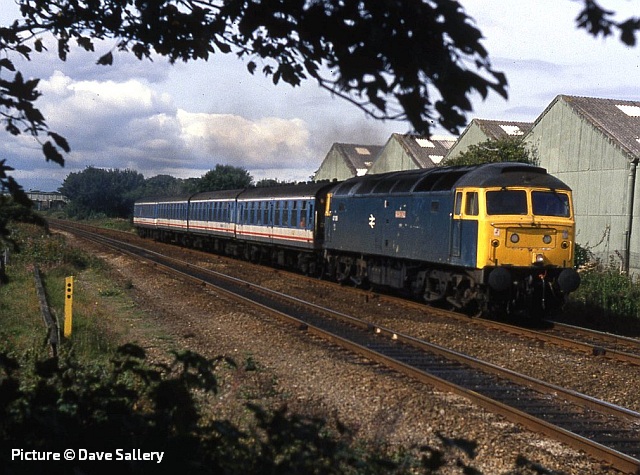
47 108 (unofficially named Golden Eagle by Tinsley depot) at Nant Hall, Prestatyn on a Manchester train, comprising four coaches still in full Network South East livery, quite a rare combination, 1 September 1990. The loco was at that time based at Crewe Diesel Depot.
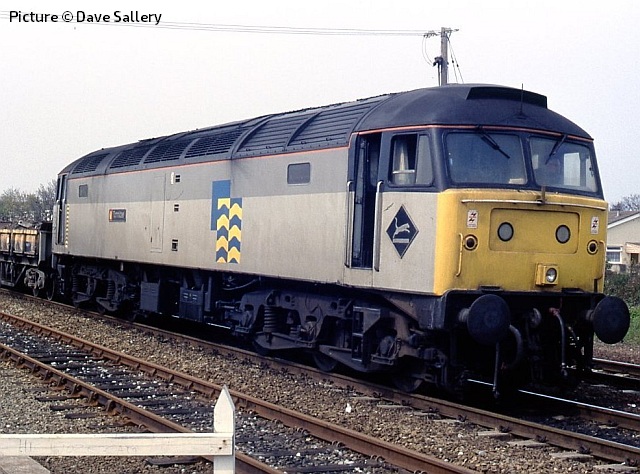
Another petroleum loco, 47 125 Tonnidae at Prestatyn on a permanent way train, 22 April 1990. This loco had had a lucky escape on 20 December 1984 hauling the 01:40 Haverton Hill to Glazebrook oil tanks through Summit Tunnel, near Todmorden, when some of the tanks derailed. The leading three tanks in the consist, and 47 125, remained on the track and were uncoupled by the crew then taken out of the tunnel.
Firemen were already on the scene securing the derailed tanks when fire broke out and everyone beat a hasty retreat. It took 48 hours to bring the spectacular fire under control and it was on 23 December that it was finally extinguished Thanks to David Hills for this account).
So serious was the fire that the tunnel remained closed to rail traffic until 19 August 1985 - an event that was marked by a walk through the tunnel on the 17th organised by Todmorden Round Table in which many thousands of people participated. (Thanks to David Evans for this account).
Some lost lines - pictures by Trefor Thompson
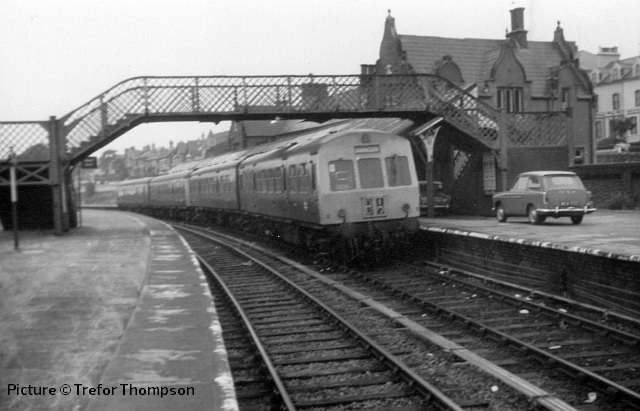
Caernarfon station in its final year of normal passenger traffic, July 1969, by which time it was a branch terminus, the line on to Afon Wen on the Cambrian Coast having closed completely in 1964.
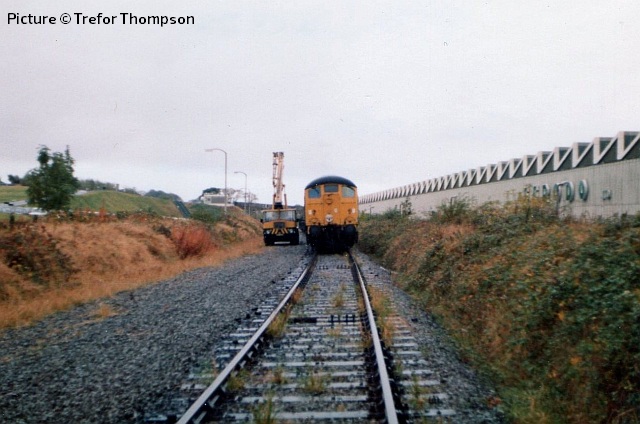
Claass 24 on track lifting train by Ferodo works, Caernarfon, October (probably) 1972
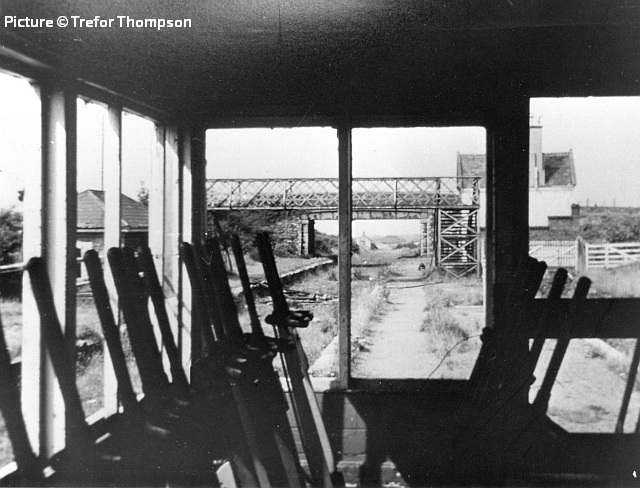
The remains Penygroes station on the Afonwen line and signal box, May 1972.
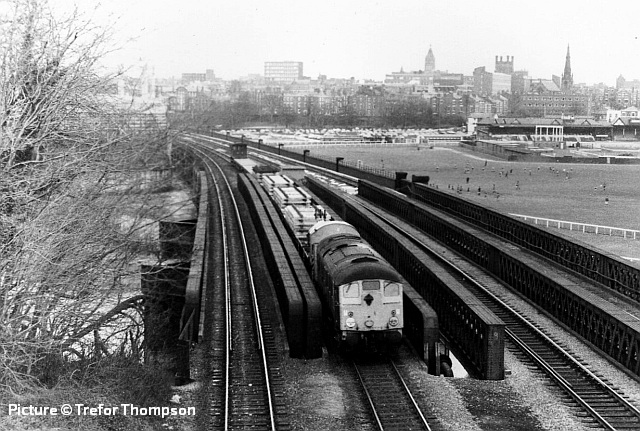
24 081 with a down Permanent Way train crossing Roodee bridge on 10 March 1979 when all four tracks, were still in place. Only the two lines on the right of the picture exist today, although both bridges are still in place.
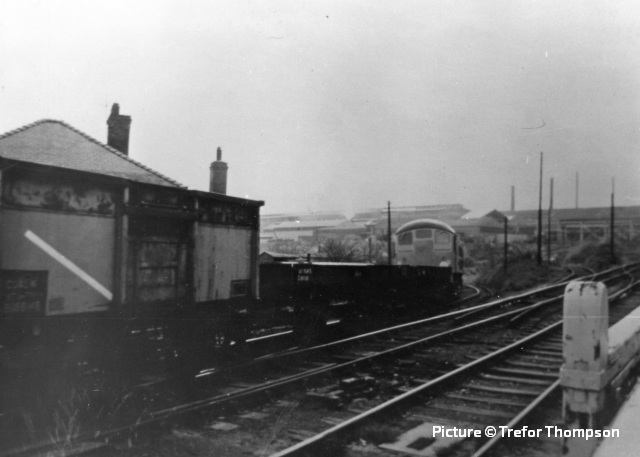
An unidentified class 24 with a train from Brymbo to Croesnewydd yard at
Brymbo Middle Crossing. Late 1970s.
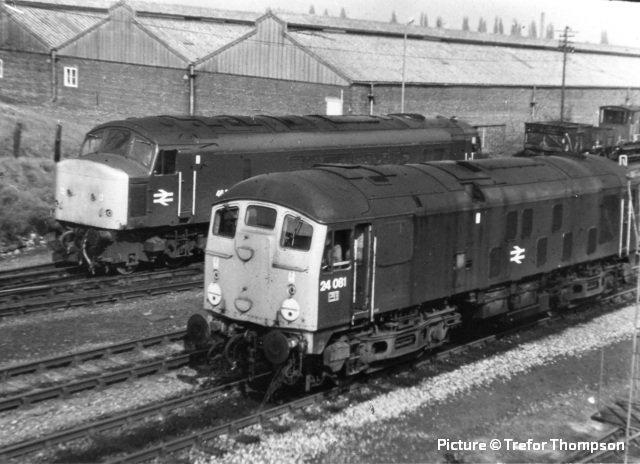
24 081 and 46 034 at the west end of Croesnewydd Yard in May 1979. 24 081 was the last Class 24 to remain in traffic; on withdrawal in 1981 it was purchased for preservation and today can be found on the Gloucestershire and Warwickshire Railway, awaiting overhaul.
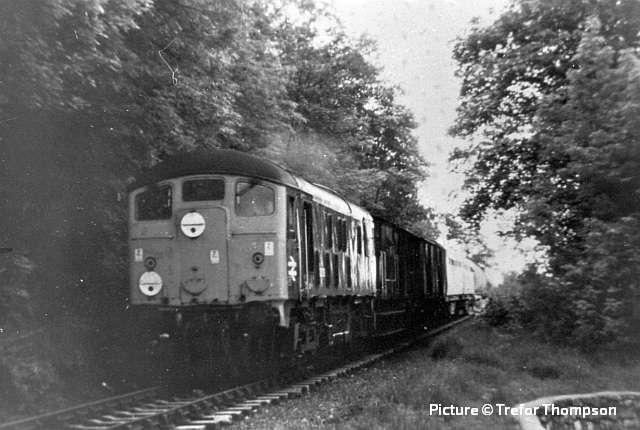
A Class 24 heads the very last weed-killing train to traverse the Prestatyn -
Dyserth branch, seen approaching site of Meliden station in June 1973 just three
months before the line closed completely.
North Wales Coast home page | Archive | Previous Notice Board